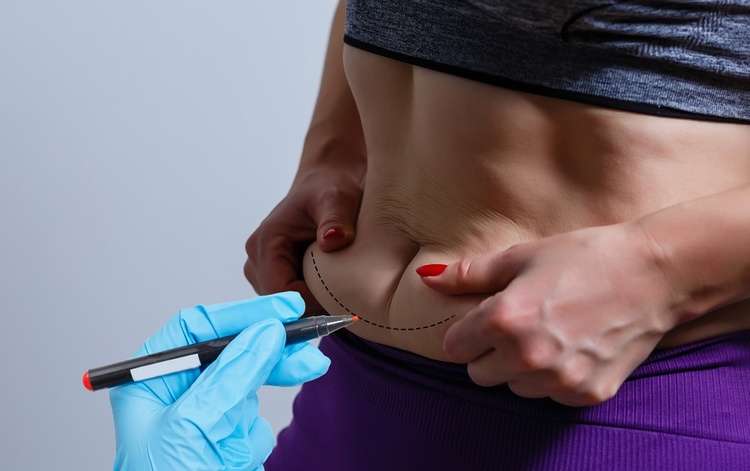Liposuction Demystified: Your Guide to Body Contouring
Liposuction removes stubborn pockets of fat to refine body shape—not a weight-loss solution but a contouring tool for patients near their ideal weight. Learn where it works best, how to prepare, typical recovery timelines, expected costs, and how to choose the right surgeon for safe, lasting results.

Best Areas for Liposuction
Liposuction is designed to target specific fat deposits that resist diet and exercise, rather than to produce major weight loss. Common treatment zones include the abdomen and waist, hips and inner or outer thighs, upper arms, back rolls, chin and neck, the chest (including male gynecomastia), and lower-leg areas like calves and ankles. Ideal candidates are typically at or near a stable, healthy weight and want improved body proportions rather than dramatic slimming.
How to Prepare for Surgery
Proper preparation reduces complications and improves outcomes. Surgeons usually advise keeping your weight steady for several months before the procedure and avoiding large fluctuations. Smoking should be stopped at least six weeks prior to surgery because tobacco use increases the risk of poor healing and other complications. Your surgeon will provide a list of medications and supplements to avoid—especially anticoagulants and anything that raises bleeding risk—so follow those directions closely.
Plan practical details in advance: arrange for transportation home, line up help for the first few days, and attend all pre-op visits. Be honest about your medical history and any medications you take. On the day of surgery, follow fasting and medication instructions precisely to ensure safety.
What Happens During Recovery
Recovery is a gradual process that usually spans several weeks. Expect immediate bruising, swelling, and some numbness in the treated areas; these symptoms typically improve over time. Many people can return to desk-based work within one to two weeks, but vigorous activity, heavy lifting, and intense exercise should be avoided for about four to six weeks to allow tissues to heal.
Wearing compression garments is commonly recommended to control swelling and help the skin conform to the new contours. Your surgeon will schedule follow-up appointments to check healing and remove sutures if necessary. While you may notice early improvement within a few weeks, the final shape often becomes clear only after swelling subsides, which can take three to six months.
Costs and Types of Providers
Cost for liposuction varies widely depending on location, surgeon experience, facility fees, and the complexity of the procedure. Below is a general pricing comparison by provider type. Always confirm what is included in any quote you receive and whether anesthesia, facility fees, and follow-up care are part of the price.
| Provider Type | Average Cost Range | What’s Included |
|---|---|---|
| Teaching Hospitals | $3,000 - $5,000 | Basic surgical procedure |
| Private Clinics | $4,000 - $8,000 | Procedure costs plus facility fees |
| Premium Centers | $6,000 - $12,000+ | Comprehensive care packages, higher-end services |
Prices and estimates are approximate and will vary by region, the surgeon’s credentials, and the specific techniques used. Verify current fees and what each estimate covers before deciding.
Selecting a Surgeon and Setting Realistic Goals
Choosing a board-certified plastic surgeon experienced in body contouring is a key factor in achieving a safe and pleasing outcome. During consultations, review before-and-after photos of similar cases, ask about complication rates, and discuss the particular technique the surgeon recommends—examples include tumescent liposuction, ultrasound-assisted liposuction, and laser-assisted methods.
It’s important to have realistic expectations: liposuction removes fat to improve shape and proportion but does not reliably tighten significantly loose or excess skin. In situations where skin laxity is prominent, your surgeon may recommend combining liposuction with a skin-tightening or excisional procedure to achieve the best result.
Potential Complications and Risk Reduction
Like any surgical intervention, liposuction carries risks. Possible complications include contour irregularities or asymmetry, fluid collections (seromas), temporary or permanent changes in sensation, infection, adverse reactions to anesthesia, and delayed wound healing. Fortunately, these outcomes are uncommon when an experienced, board-certified surgeon performs the operation and when patients follow pre- and post-operative guidance.
To reduce risk, choose a qualified surgeon, stop smoking as instructed, avoid prohibited medications and supplements, attend all follow-up visits, and report concerning symptoms promptly—such as increasing pain, redness, fever, or unusual swelling.
Long-Term Results and Maintenance
Liposuction removes fat cells from treated areas permanently; however, remaining fat cells can enlarge if you gain weight afterward. Maintaining a balanced diet, regular exercise, and steady weight management helps preserve your new contours. Scars are usually small and placed in discreet locations, but their appearance varies by individual and should be discussed during your consultation.
A clear timeline, an experienced provider, and faithful adherence to recovery instructions are primary factors that influence satisfaction with results.
This article is for informational purposes only and should not be considered medical advice. Please consult a qualified healthcare professional for personalized guidance and treatment.






